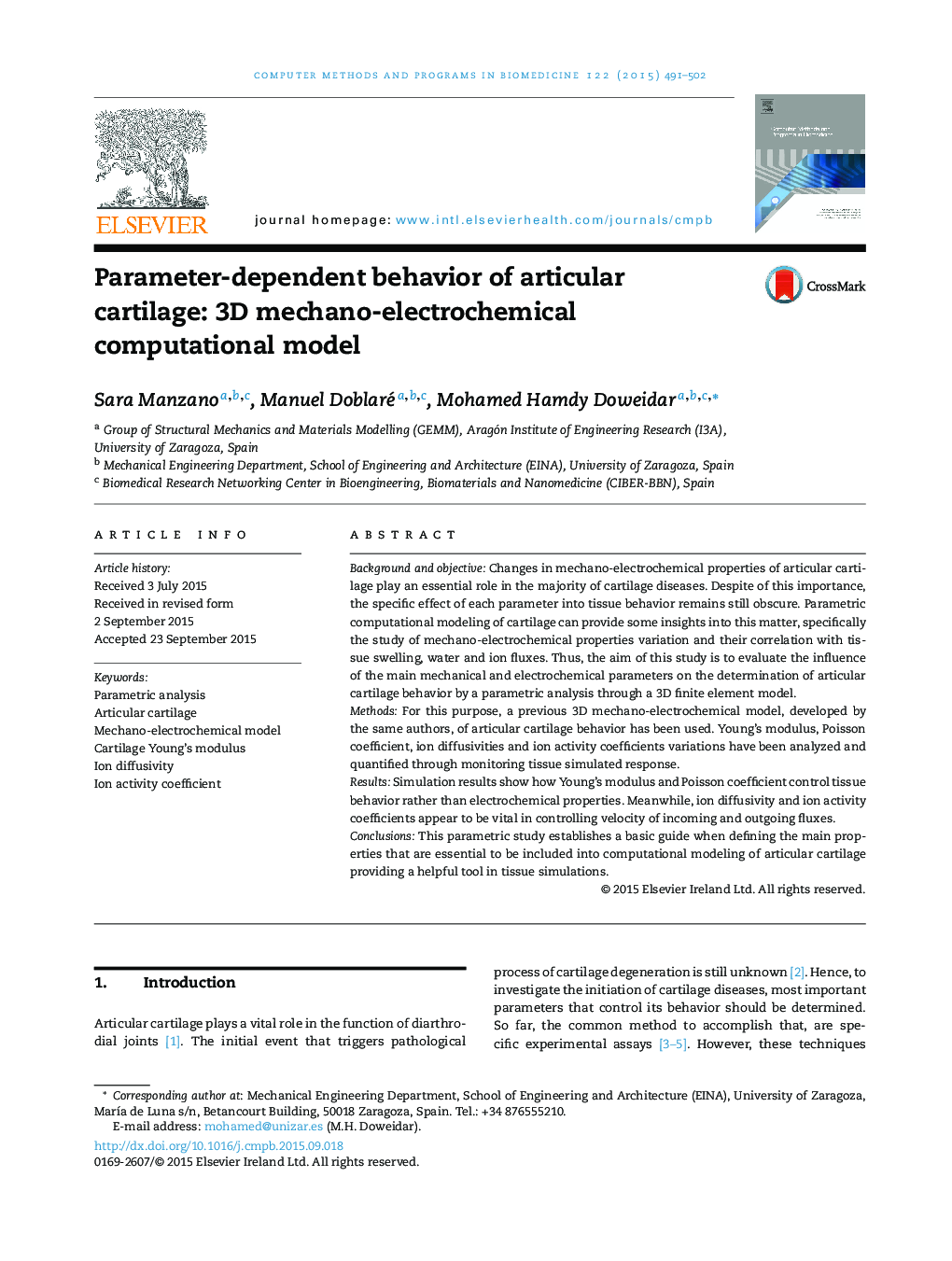| Article ID | Journal | Published Year | Pages | File Type |
|---|---|---|---|---|
| 468287 | Computer Methods and Programs in Biomedicine | 2015 | 12 Pages |
•A parameter-dependent analysis of articular cartilage is developed through a specific computational model.•The results show how Young's modulus and Poisson coefficient control tissue behavior rather than electrochemical properties.•Ion diffusivity and ion activity coefficients appear to be vital in controlling velocity of incoming and outgoing fluxes.•This parametric study establishes a basic guide the essential properties to be included into computational modeling of articular cartilage.•The model provides a helpful tool in articular cartilage simulations.
Background and objectiveChanges in mechano-electrochemical properties of articular cartilage play an essential role in the majority of cartilage diseases. Despite of this importance, the specific effect of each parameter into tissue behavior remains still obscure. Parametric computational modeling of cartilage can provide some insights into this matter, specifically the study of mechano-electrochemical properties variation and their correlation with tissue swelling, water and ion fluxes. Thus, the aim of this study is to evaluate the influence of the main mechanical and electrochemical parameters on the determination of articular cartilage behavior by a parametric analysis through a 3D finite element model.MethodsFor this purpose, a previous 3D mechano-electrochemical model, developed by the same authors, of articular cartilage behavior has been used. Young's modulus, Poisson coefficient, ion diffusivities and ion activity coefficients variations have been analyzed and quantified through monitoring tissue simulated response.ResultsSimulation results show how Young's modulus and Poisson coefficient control tissue behavior rather than electrochemical properties. Meanwhile, ion diffusivity and ion activity coefficients appear to be vital in controlling velocity of incoming and outgoing fluxes.ConclusionsThis parametric study establishes a basic guide when defining the main properties that are essential to be included into computational modeling of articular cartilage providing a helpful tool in tissue simulations.
